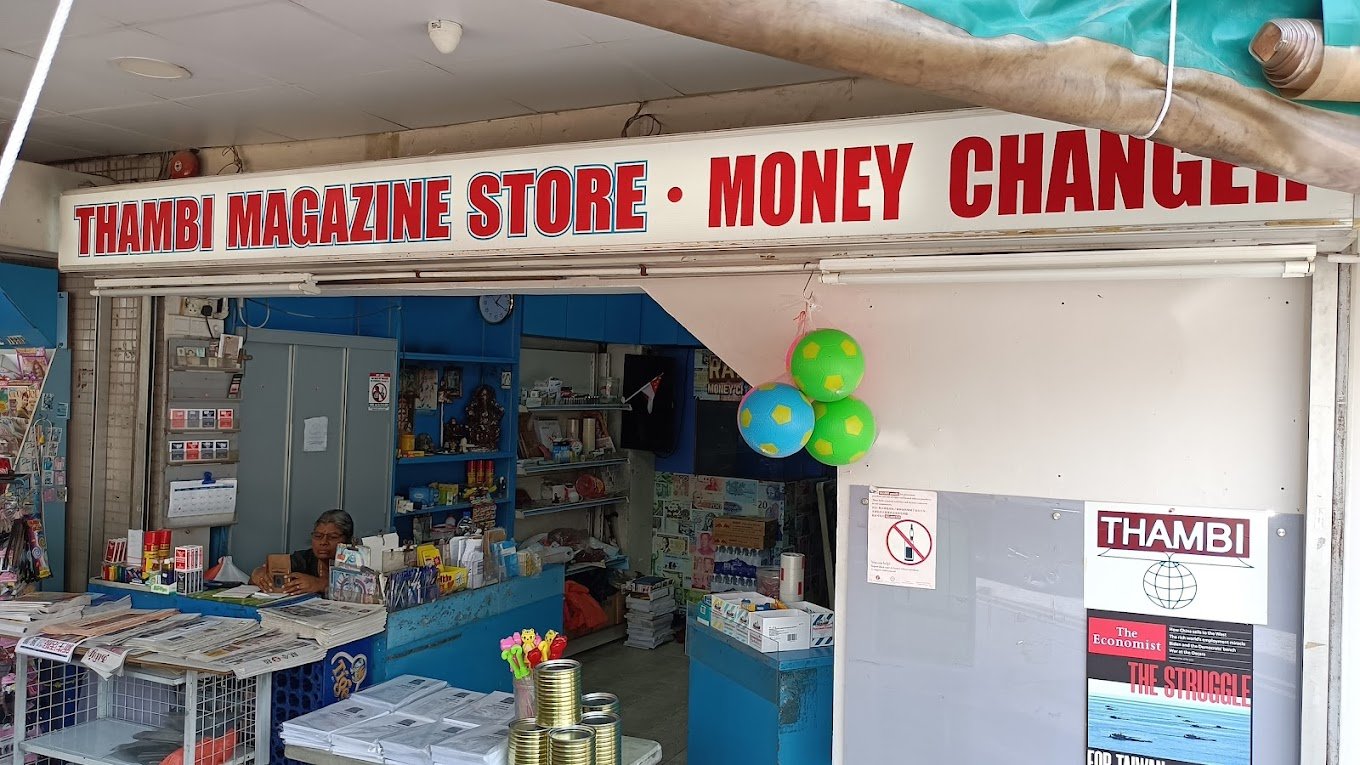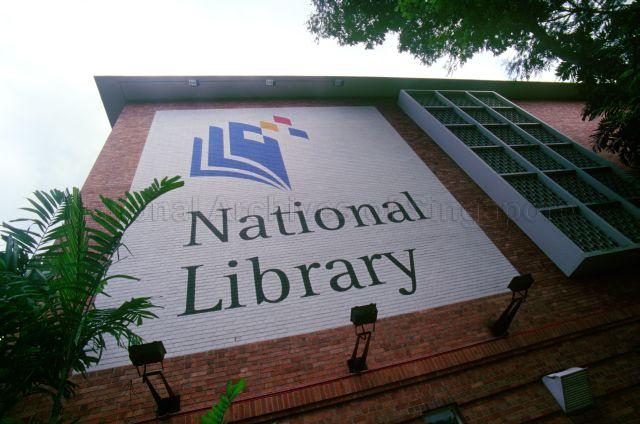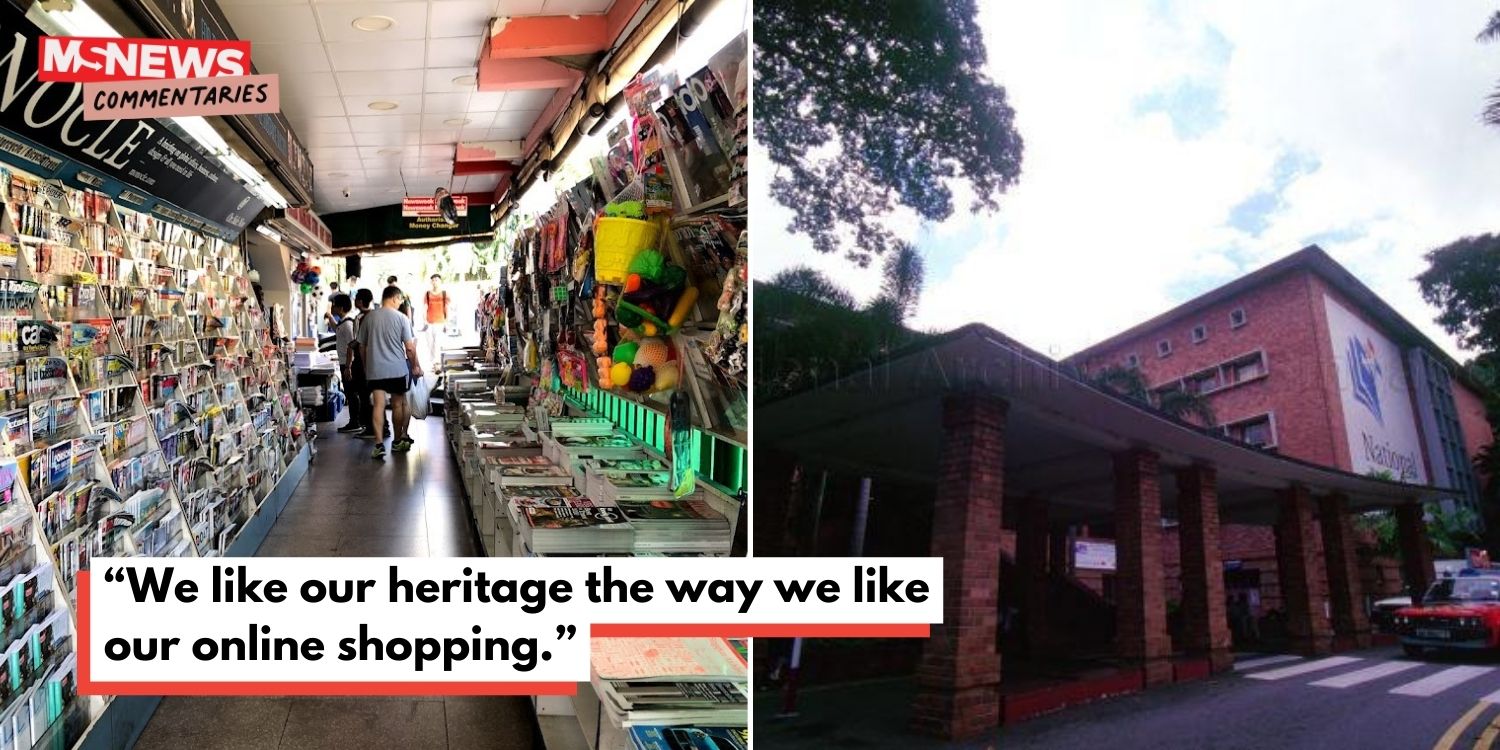Thambi store, Marine Cove McDonald’s: Singaporeans like heritage only if it’s convenient & accessible
As far as Thambi Magazine Store goes, it’s all over but the shouting.
Well, except for the social media lamentations and the pontificating commentaries (like this one!) about what the closure of the 80-year-old corner store really means.
The so-called outpouring of grief over the loss of heritage sites — and not everyone will agree on what counts as heritage — is not a new phenomenon.
Whether it be the final train service into Tanjong Pagar railway station in 2011, the closure of the Marine Cove McDonald’s the following year, or the shuttering of Thambi, it all goes through a predictable — and tiresome — cycle.
The same pattern repeats
It begins with an announcement of the closure of a once-beloved institution (“What, it’s still around?”), followed by an outcry (“It’s the end of an era!”) in multiple social media posts.

Source: Google Maps
Then there is a sudden spike in visitors, fuelled by nostalgia and journalists who can smell the sweet, sweet clicks of an easy story.
A petition or two with a half-hearted appeal for said institution’s preservation might pop up. Politicians may also get involved, drawn by the low hanging fruit of an easy win with minimal effort.
The sad conclusion comes on a final day replete with masses of people taking selfies and the social media posts that follow.
Just look at the crowd that turned up at Thambi store, snapping away as owner Periathambi Senthil Murugan pulled the shutters down on his family business for the last time. (“Aiyoh, he’s crying, so poor thing. Let me zoom in on his tears”).
Within a day or two, everyone moves on. But hey, we’ll always have Instagram/Tik-Tok/YouTube/Facebook. Just make sure you like my post and share it, k?
In the name of progress
In all seriousness, there is a larger point to be made about the loss of heritage in a nation so young, and what we are prepared to do about it. The answer to the latter is very often: not a whole lot.
And it was @weehoursreads who put it best on Instagram: “Honestly, in my selfish little way, I just wanted the shop to remain in the background of my life, the way it has for 30 over years, without actually contributing to its existence.”
She added: “It’s hard to say goodbye, but when you live in Singapore, you get used to it.”
Sociologists can better explain how, having already seen so many historical sites and buildings demolished in the name of progress, many Singaporeans now feel the need to preserve what was once deemed expendable (cue a tired old reference to Maslow’s Hierarchy of Needs — do they still teach that in university?).
In this regard, agencies like the National Heritage Board do important preservation work. Conservationists and heritage activists help inform and educate us while lobbying authorities to do more.
But for the vast majority of Singaporeans, we like our heritage the way we like our online shopping: convenient, accessible and hopefully not too expensive.
What is worth preserving?
There are two key questions to consider that should inform our assessment of what is worth preserving: what is the price of progress and the cost of heritage?
Not everything deserves to be preserved, and hard choices need to be made in a small nation with finite resources.
Ironically, Thambi may yet have a second lease of life, after Education Minister Chan Chun Sing’s intervention to help it find a new storefront for Thambi.
But let’s be honest: even if this comes true, would the new incarnation make enough money to survive?
Sentiment is all well and good, but it reminds me of what US talk show host Stephen Colbert once asked a guest who was starring in a movie about the iconic Life magazine: “Now, please explain to these young people in the audience what a magazine is.”
If even the once mighty Singapore Press Holdings needed a Government bailout, what chance is there for Thambi, which had reportedly been operating at a loss for months?
Every business lives and dies by its own merits, and no one should ever feel obliged to patronise one just because you feel sorry for them.
To put it bluntly: there is little point in expending resources on a store with an outdated business model, selling products that few even buy anymore.
Doing our part
So what should we fight to preserve then?
I am reminded of the valiant effort in the late 1990s to save the old National Library Building, which was eventually torn down in 2004 to make way for the Fort Canning Tunnel, despite extensive lobbying by Singaporeans.
Was it worth preserving? That is certainly debatable, but what many saw as a national icon was lost, all so that motorists could save literally minutes on their commute.
The campaign was sparked by a letter to The Straits Times Forum page (yes children, people actually used to write letters to newspapers!).

Source: Peter Lamb on National Archives Singapore
And when a public symposium on its fate was held at the Singapore Management University in March 1999, ST reported that more than 300 people turned up, debating the issue for more than four hours.
There have been comparable campaigns since, such as the activists who fought in vain to prevent the partial exhumation of Bukit Brown, but this particular one didn’t even need social media to get going.
About the only thing Singaporeans are willing to spend four hours on these days is queuing for Taylor Swift tickets.
At the end of the day, just like the Thambi store, the National Library couldn’t be saved. But judging by the reaction at the time, it was well worth fighting for.
It arguably also sparked a re-examination of priorities by both the Government and Singaporeans, and a greater awareness of what has been lost in the rush to develop.
Some might say: well, what is the point when it is the Government that will determine what should be preserved?
They may be right. But if nothing else, it is in the effort that a community comes together, that we understand what we truly value, and what we are prepared to do for it.
And that is when we will understand what is worth fighting for.
Nicholas Yong is a veteran journalist who has worked at media outlets such as BBC News and Yahoo News Singapore over the past 17 years.
Also read: Commentary: Singaporeans are happiest being the (un)happiest in Asia
Commentary: Singaporeans are happiest being the (un)happiest in Asia
Have news you must share? Get in touch with us via email at news@mustsharenews.com.
Featured image adapted from Google Maps and Peter Lamb on National Archives of Singapore.









